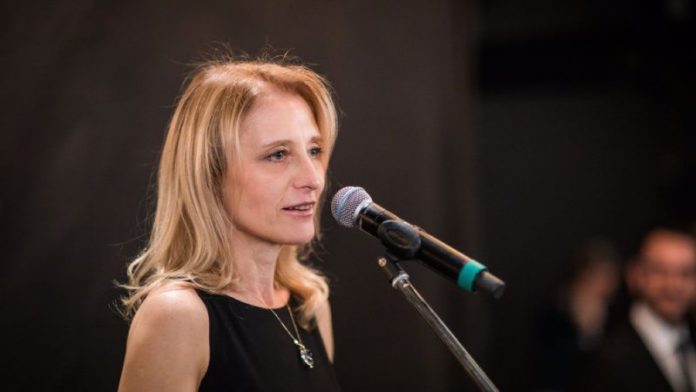The COVID-19 pandemic has touched us all, but it has also left us out of touch. This is especially true in the education sector and the recent evolution in the art of teaching and learning. News articles feature the latest learning platforms and tools, but much less attention is given to the one human need the pandemic denies us: real face time.
I witnessed this first-hand in Junior Achievement Bulgaria, where we organized an entrepreneurship training for deaf youth in July as part of the “NEETs in Entrepreneurship” project, helping young people across Europe start a job or find a business. Due to the pandemic, we could only accommodate eight young entrepreneurs and two trainers in one room for this very important training, which builds essential self-confidence and leadership skills.
The “NEETs in Entrepreneurship” project is funded by Iceland, Liechtenstein and Norway through the EEA and Norway Grants’ Fund for Youth Employment. By the end of the project in 2021, 1,600 young people not in education, employment or training (NEETs) in Bulgaria, Italy, Romania and Spain will have received custom training that helps them to become active members of our society. In addition, the project aims to prevent another 1,000 students from becoming NEETs by giving them training and counselling. Helping these young people poses several challenges, especially these times, but we remain focused on our mission.
Deaf young people are especially impaired by the pandemic measures. Sign language conversations are hard to carry over video conference. Standing meters apart makes deciphering gestures difficult, while lip reading is impossible when everyone is wearing a mask. COVID-19 has essentially made the world inscrutable to the deaf community.
They are not alone.
At Junior Achievement Bulgaria we have a mission to help young people see, hear and touch the world of business, innovation and success. One of our leading programmes, Job Shadow Day, literally puts high school students in the seats of managers, engineers, executives, NGO leaders, mayors and even the Bulgarian president– over the span of one working day. How would you comprehend the responsibility of leading a country when you sit behind your home laptop and not a resolute desk? How could you know what product line your team is overseeing, when you cannot sense the vibrations of the factory floor? Would you have the best memories of your start-up award ceremony, when it was entirely virtual and you could not experience the winning handshake and the weight of the trophy?
Yes, we know social distancing will stay for now and the world needs to adapt. Some of our student teams are leading in finding solutions by e.g. leveraging technology to maximize sales of SMEs or using a mobile app to help hospitals lacking staff improve their healthcare.
Yet, we should not forget that teaching is about being close and personal. This is how we learn best in infancy and childhood, and how we continue to learn throughout our lives and even in old age. COVID-19 must not and will not be allowed to change that!
So how do we get some real face time back into our classrooms and board rooms? Here are some tips, based on the Build-Measure-Learn approach integral to Eric Ries’ Learn Start-Up Method that we practice in the entrepreneurship community:
- Build – We must rebuild our learning spaces, mindful of the new challenges and needs. Surely, new virus-safe architecture designs and codes, and extensive building refits and renovations may be important. But you can start small and on a shoe string budget, creating a Minimum Viable Product (MVP) of what your space might look like. Move the desks and chairs around. Set aside spaces to meet, greet and elbow bump. Arrange your learning toolkit, which includes every physical object in the room. Always let people be able to stand up and move to learn with their feet (kinetic experiences are important to our training routines). Put cues and reminders for people to wash hands or wear masks when needed. Knowing how the virus spreads is important. A good in-person training must be able to avoid and outmanoeuvre it.
- Measure – We must always seek to measure what is important to learning, which in our case often involves surveying our students and training participants. If PCR testing before a training is not feasible, it may be possible to design entry surveys to help people self-diagnose both their levels of recent exposure as well as their readiness to take risks. Many universities and schools are designing hybrid in-person and distance learning class systems, allowing those who must (like our deaf entrepreneurs) or want to take part in live trainings actually participate – with the maximum amount of protection.
- Learn – After every in-person training, collect feedback and data from participants. Did they feel safe? Was the environment and situation conductive to learning? Would a virtual or online session have worked just as well? Incorporate results and use them to design the next training better.
In conclusion, we do not know how long the current situation will last, and what our new digital normality will look like. Yet, we should fight for our right to come together and learn. In the 20th century we made the mistake of designing cities around the seclusion of the automobile. Let’s not make the same mistake in the 21st century. Learning is about proximity of people and ideas, not social distancing.
Watch here trainer’s testimonials after a training for deaf young NEET people in Bulgaria: https://www.youtube.com/watch?v=EYwkUCrraRA.


